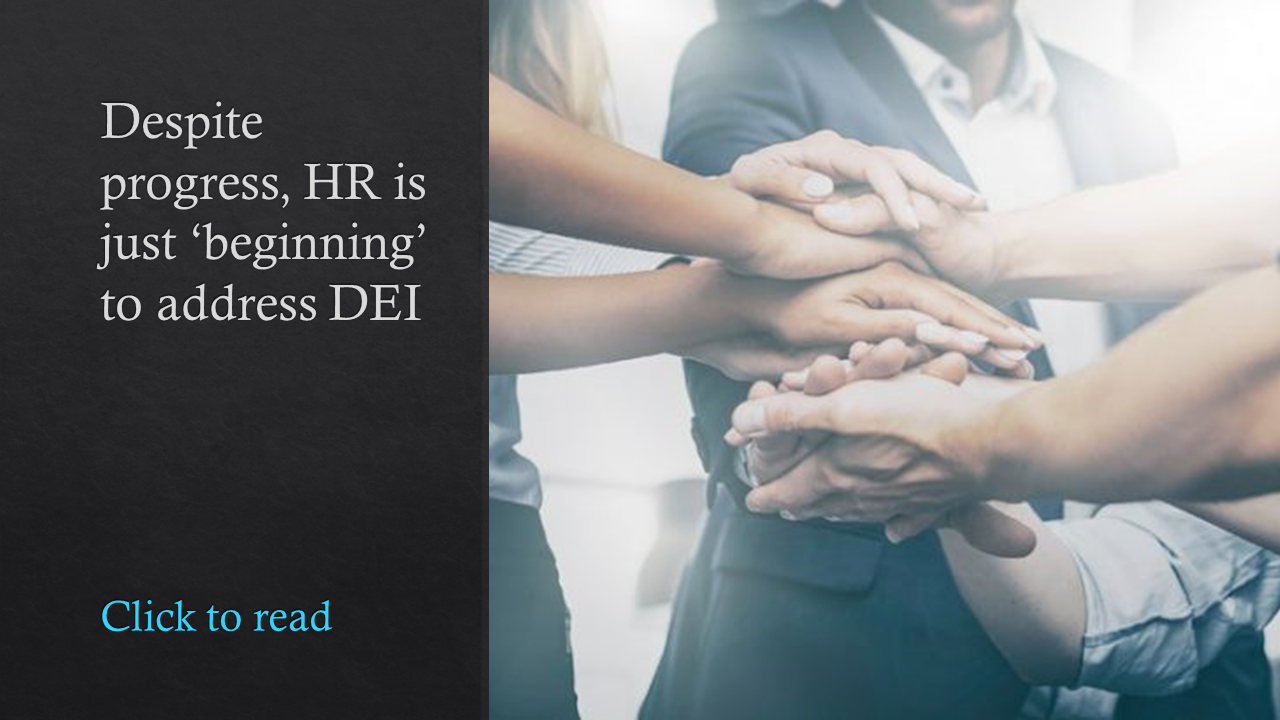Editor’s note: Carol Surface has recently been announced as the first chief people officer at Apple. Originally published in 2021, this conversation with Human Resource Executive managing editor Jen Colletta provides key perspectives into the incoming leader’s priorities.
*
Original story, published May 12, 2021: Last summer, amid growing national unrest over racial inequality, scores of corporations opened up conversations with employees about what diversity, equity and inclusion did, or should, look like at their organizations. For medical device company Medtronic, leaders sought to take the conversation one step further–with action.
Among the DEI initiatives taken over the last year, the organization launched a Global Day of Action for Racial Equity on July 29, which connected all of its more than 100,000-plus global employees with opportunities to virtually volunteer, learn about the issues and give back to community organizations.
Carol Surface, senior vice president and CHRO at Medtronic, says that, while Medtronic–which boasts pay equity of 100% for gender and 99% for ethnicity in the U.S.–has long been invested in DEI, the events of the past year prompted it to both deepen and extend that commitment.
“I would say 2020 woke us up to say, ‘We have a responsibility, grounded in our purpose statement, to amplify our impact outside of Medtronic and make a more visible and sustainable commitment to rooting out systemic inequities in society,’ ” Surface says.
Surface recently shared with HRE how the organization has done that, as well as how it has risen to the challenges of the pandemic.
HRE: What was your HR priority right before the pandemic–and then how quickly did you have to shift gears?

Surface: First, I was concluding supporting our board in the development of a seamless CEO succession plan. This reflected multiple years of CEO succession and development planning efforts, so that was top of mind for me personally. Second, as you can imagine with a new CEO coming on board, that comes part and parcel with a new strategy and, in our case, a completely new enterprise-wide operating model and cultural transformation. Thirdly, our focus continues on inclusion, diversity and equity. We hired our first chief inclusion and diversity officer–that was always in the plan but was very well-timed. That’s how I would describe priorities for 2020, and then, of course, came the pandemic. I personally co-led our COVID response and how we supported our employees, which is now evolving into developing the future of work.
HRE: How did Medtronic handle the shift to remote work?
Surface: It was really the triangulation of: What are the needs of the business? How do we listen to and understand the expectations of our employees? And what is the external market doing?
When it comes to the business needs, we design, manufacture and distribute lifesaving technology, so the implications of that were that 50% of our entire workforce remained on site. We tackled that through the application of COVID protection efforts. We were in the fortunate position of having many medical doctors on staff and, of course, the way we manufacture our products had many safety protocols already inherent.
But it was about reemphasizing and customizing safety protocols for all employees working on site. The other 50% of the workforce was working remotely and very effectively and productively over the course of the pandemic. We’ve put in place parameters before any remote stuff returns on site, which includes tracking data externally and also tracking employee infection rates, which we’re now doing this year at scale. We’re really focusing on the future of work and what will likely be a hybrid work arrangement.
Related: Learn about COVID-driven benefits changes during the Health & Benefits Leadership Conference, May 11-13. Click here to register.
HRE: What kind of work did you and the HR team need to really focus on for preserving culture throughout this time?
Surface: That really is honestly the central component to HR’s direct involvement in shaping our CEO’s new strategy. The operating model put into place is multi-faceted: structure, culture, process, incentives, rewards–it really is the totality of how we run Medtronic.
It’s everything from the cultural norms to simplified processes to faster decision-making and clarity of roles and responsibilities. We’re not encumbered by bureaucracy and too many layers in the organization. Around culture, we did quite an extensive quantitative and qualitative surveying of customers, analysts, investors and employees and, through that research of thousands of people, got a good map of our five cultural norms that we now call the Medtronic Mindset, which we’re in the process of activating.
Our HR team is supporting that process by translating those cultural components across all of our core HR processes–incentives, rewards, talent and promotion processes; culture is long-term and it’ll be a multi-year effort before we see the full effects.
HRE: Medtronic recently reached 100% gender pay equity and 99% for ethnically diverse employees in the U.S. How did you get to that place, and what are the plans now to sustain that success?
Surface: Pay equity has been something Medtronic has looked at for a long time and done analyses on for years. It’s not something where we woke up last year and decided this is something we ought to be doing. We’re really proud of having gender pay equity at 100% in the U.S. and in other countries around the world.
Yet when you aggregate the results, pay equity is only at 99% globally. Similarly, our pay equity for ethnic diversity in the U.S. is only at 99% in aggregate. In terms of next steps, we’re going to be focusing on the micro-level–understanding what cohorts of employees or job classes have the biggest gaps–and then very surgically targeting those areas and working almost in a manager-by-manager level to make sure there are no barriers holding back equal pay for similarly done jobs.
This is a continuation of a long-held and ongoing analysis Medtronic has done for years and, frankly, it won’t stop until we reach pay equity by gender in all countries, all job levels, all cohorts of employees and similarly for ethnic diversity in the U.S.
HRE: What was the impetus behind the Medtronic Day of Action for Racial Equity this past summer?
Surface: It was a new initiative for us. It was clear we needed to do something symbolic and memorable to tune into what our employees were experiencing. That Day of Action was really generated by many of our conversations with employees, particularly those in the African Descent Network. We looked at our areas of focus [of the DEI strategy] against three prongs.
First was at an individual level: We have to focus on employees and particularly people leaders, helping them be accountable role models for diversity and inclusion. Second was companywide culture–making sure inclusion, equity and diversity are in our DNA and being done naturally, versus something that’s led top-down. And then it comes back to the community notion, amplifying the impact outside of Medtronic to really address the systemic inequities plaguing particular communities for generations. The Day of Action for Racial Equity was in part born from all three of those areas.
Read more Insights from a CHRO here.
HRE: Are there any lessons from your own career history that have helped you navigate the challenges of the last year?
Surface: I’m thinking back to about 18 years ago when I was at PepsiCo, where I spent 10 years. I happened to have just moved to Hong Kong in 2003 and a couple of weeks later the Severe Acute Respiratory Syndrome, or SARS, broke out.
Patient Zero was right in Hong Kong, and I was supporting our China business at the time. Granted, SARS was simply an epidemic but, from that experience, I learned a lot about the actions, protocols and engagements that needed to occur to keep employees safe.
That absolutely prepared me well to be able to co-lead Medtronic’s crisis response efforts to COVID-19. The biggest lesson I learned was that, if employees are at the center of all of your actions and you focus on their health and wellbeing and that of their families, you’ll be in the best position to support the needs of your business. PepsiCo and Medtronic are certainly two different businesses and in two different industries but that lesson couldn’t be more relevant today.
HRE: What are you passionate about outside of work?
Surface: First is the commitment to giving back to the HR profession. I do that in multiple ways, including as one of the vice-chairs of the HR Policy Association, which represents the largest employers in the U.S. One of the pieces of work I do there is chairing the CHRO Impact Series and I’m focused on developing courses for new CHROs from the lessons and experiences we’ve all learned throughout our careers. Similarly, I’ve recently become a fellow of the National Academy of Human Resources and part of the nomination to that esteemed group is exactly that: giving back to the HR profession, developing, sponsoring and mentoring the next generation of strategic HR leaders.
On a personal note, anything fitness-related I really enjoy. Outside in the warmer weather, I like to go paddle-boarding. I grew up in Vermont, so downhill skiing is also in my DNA, though this year in our pandemic environment, I have developed an affinity for the Peloton.



